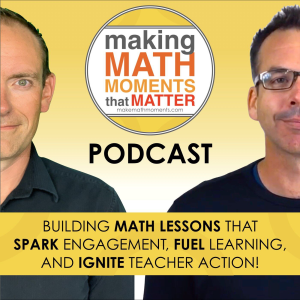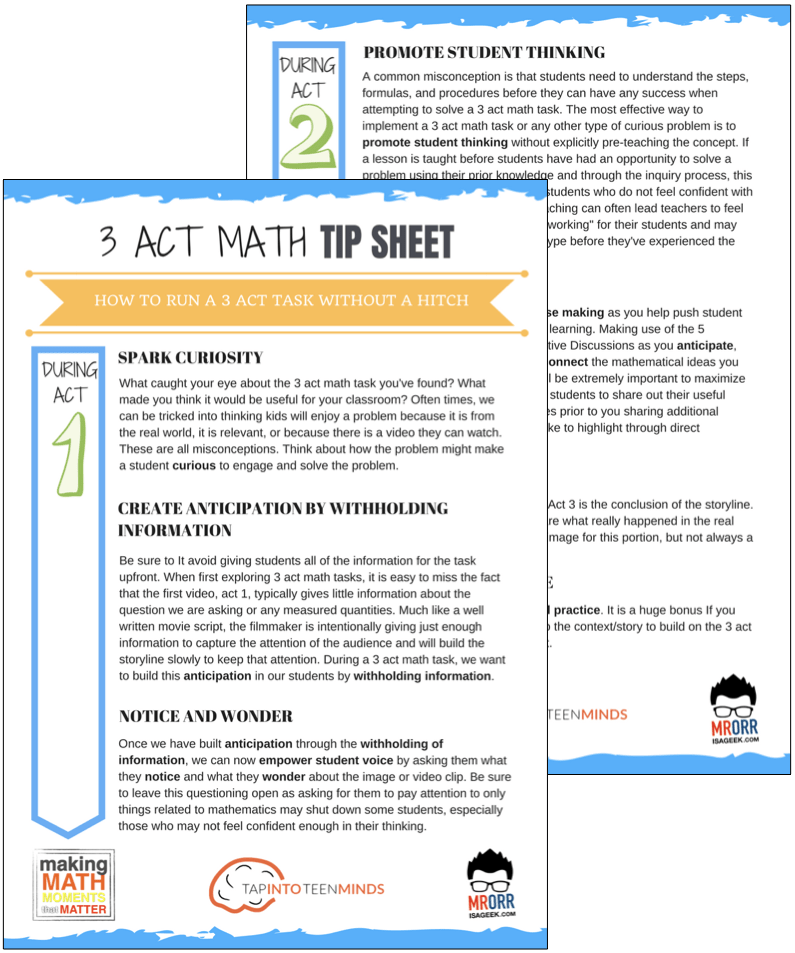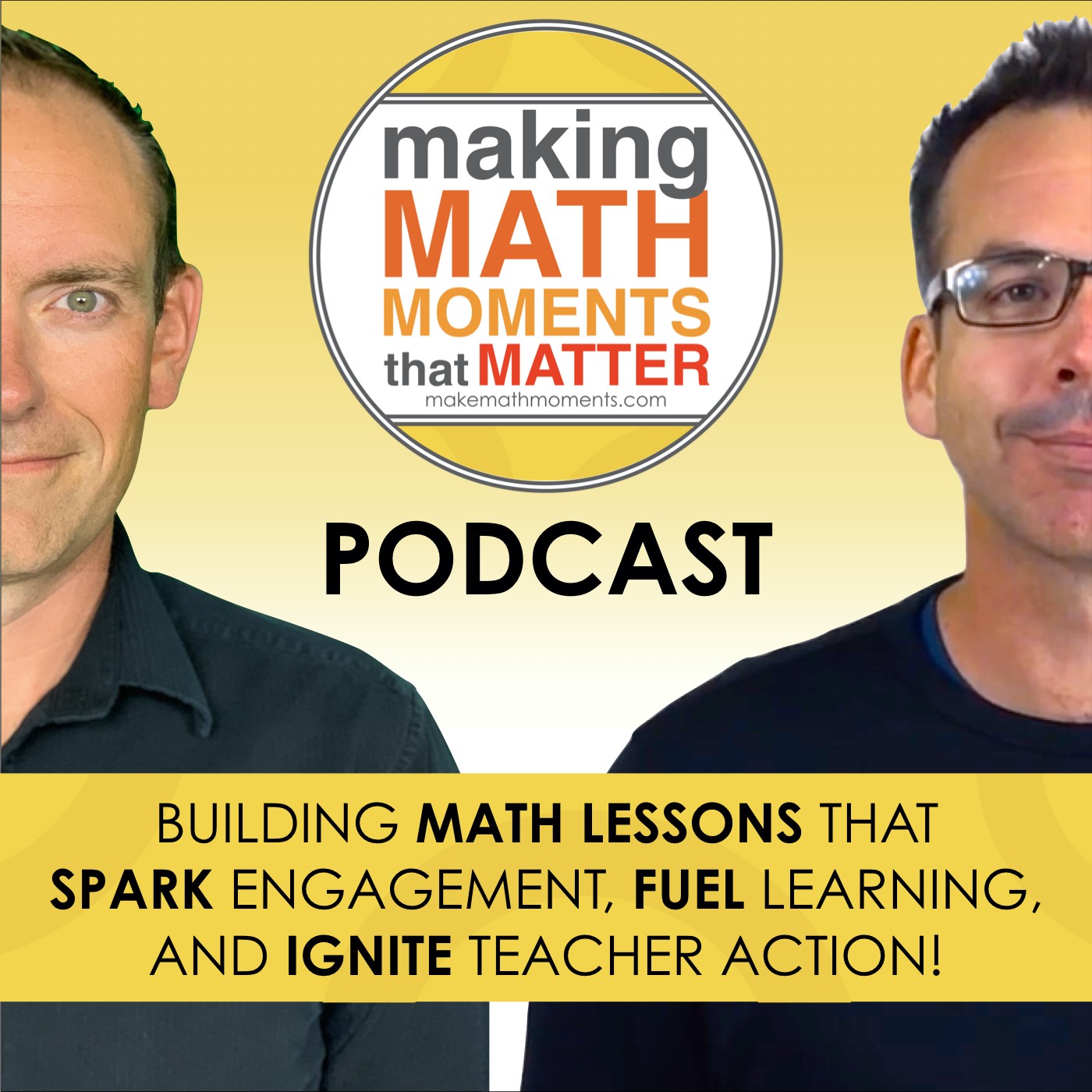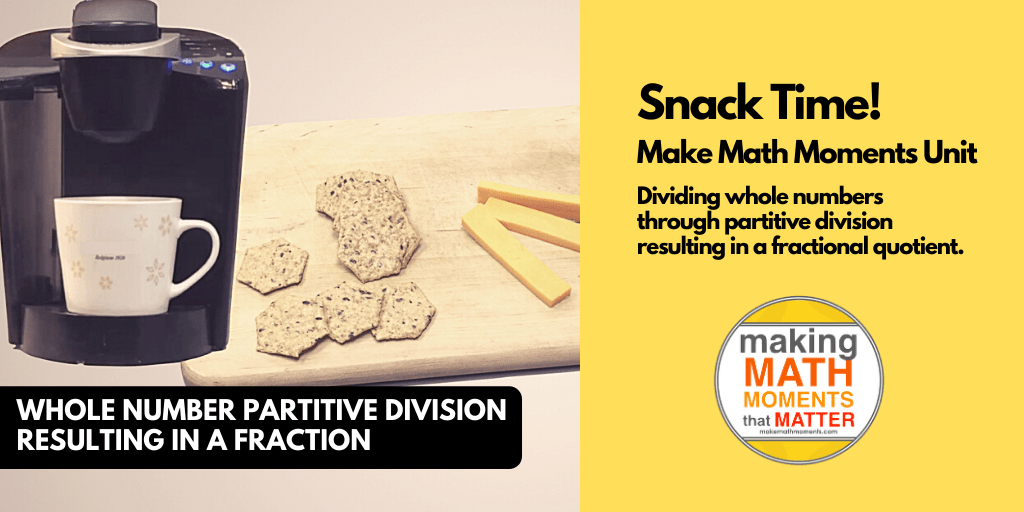Episode #320: Prune to Thrive: Why Doing Less Can Strengthen Your Math Program | Effective Mathematics Coaching and Training
LISTEN NOW HERE…
OR JUMP TO YOUR FAVOURITE PLATFORM
WATCH NOW…
Episode Summary:
In our quest to create high-impact math programs, it can feel natural to pile on new initiatives, hoping that one of them will spark the change we’re looking for.
However, as Jon Orr explains in the video above, there’s power in focusing on fewer things that matter most.
In fact, sometimes doing less is the key to achieving more.
Using the metaphor of a tree, Jon breaks down six essential components of a math program that we can nurture to build a stronger, more impactful educational experience. Just like a tree, your program’s success depends on nourishing the right areas and pruning what no longer serves you. Here’s a look at why simplifying your focus can make all the difference and how to get started.
The Tree Analogy: Growing a Stronger Math Program
Think of your math program as a tree. Each part of the tree represents a crucial aspect of a thriving math program:
- The Trunk – Leadership and Vision: The trunk of the tree is your leadership and vision. This is the foundation that holds the program together, and it’s the source of alignment that every other component relies on.
- The Roots – Mathematical Proficiency: Deep roots are essential to keep the tree standing tall. In a math program, these roots are the mathematical proficiencies you aim to foster in both students and educators. The stronger your roots, the more secure the program.
- The Limbs – Professional Development Structures: The limbs represent the structures for professional development. They support ongoing growth for your educators, strengthening their abilities to effectively teach and inspire students.
- The Branches – Pedagogical Moves: Branches reflect the pedagogical strategies teachers use in the classroom. These are the methods that help students connect with the material and make sense of math in meaningful ways.
- The Leaves – Resources and Lessons: The leaves are what you see – the resources and lessons that bring the entire program to life. These are the visible tools used daily in classrooms, supporting learning in real time.
- The Soil, Water, and Sunlight – Mindset: No tree thrives without the right environment. Here, Jon refers to mindset, which is about cultivating a positive and resilient approach to learning, teaching, and improving in math.
When you care for each part of the tree, the whole program grows strong. But, when too many “branches” are left unchecked – ideas and tasks that don’t serve the core mission – they sap the tree’s energy. This is where pruning comes in.
The Power of Pruning: Why Less is More
In any thriving ecosystem, pruning is essential. Trees need to have their unnecessary branches trimmed to allow nutrients to reach the parts that contribute most to growth. Similarly, we need to trim away distractions from our math programs. While there may be six components to focus on, it doesn’t mean we should fill each one with endless initiatives.
Pruning for Clarity and Focus
When we focus on too many things, we focus on none. For math leaders, K-12 coordinators, and coaches, narrowing the focus to a few key areas of improvement can lead to more impactful change. Doing so allows us to maintain a clear and consistent message. Every time you walk into a classroom or run a session, you’re sharing the same core ideas. This builds alignment and helps teachers rally behind the vision, understanding that these areas matter and will stay consistent over time.
Combating the Urge to Do More
Many of us feel an inherent pressure to add more. It’s common to think that more initiatives mean more improvement.
However, the reality is that the drive to do “more” often comes from uncertainty. If we’re not sure what will make the biggest impact or can’t see clear results, we’re tempted to add even more branches, hoping one will stick. But this only creates a scattershot approach.
Instead, we need to trust that by focusing on just a few impactful things, we’ll ultimately see more growth in our programs.
How to Start Pruning
It’s time to challenge ourselves: what can we let go of? What initiatives don’t serve the bigger picture, and what should we double down on? Here are some practical steps to help guide your pruning process:
- Identify Core Priorities: Ask yourself and your team: what are the few areas that, if improved, would make the biggest difference in student outcomes? Often, focusing on math proficiency for educators, for instance, can create a lasting ripple effect on teaching quality and student understanding.
- Simplify Your Message: Consistency is key. By maintaining a clear, unified message, teachers will be more likely to adopt the changes and feel confident in the direction. Every interaction, every session, should reinforce these core ideas.
- Develop Measurement Tools: Define metrics that help you see impact early on, so you’re not waiting for student data at the end of the year. You can measure teacher growth, changes in mindset, or engagement levels to gauge your progress.
- Let Go of the Guilt of Doing Less: Recognize that the pressure to add more comes from a desire to help. However, doing less doesn’t mean you’re making less of an impact. In fact, focusing on fewer things can have a more profound, lasting effect.
Reap the Rewards
By pruning and focusing on the essentials, you’ll foster a math program that grows stronger, clearer, and more sustainable over time. The roots will deepen, the branches will stretch further, and the entire tree will stand tall, supported by a solid foundation and nourished by consistent care.
So, go ahead – prune your tree. Embrace the idea that doing less can lead to so much more, and watch your math program thrive. 🌳
Attention District Math Leaders:
Not sure what matters most when designing math improvement plans? Take this assessment and get a free customized report: https://growyourmathprogram.com
Ready to design your math improvement plan with guidance, support and using structure? Learn how to follow our 4 stage process. http://makemathmoments.com/discovery/
Be Our Next Podcast Guest!
Join as an Interview Guest or on a Mentoring Moment Call

Apply to be a Featured Interview Guest
Book a Mentoring Moment Coaching Call
Are You an Official Math Moment Maker?

FULL TRANSCRIPT
I want to talk to you from home about doing less, focusing on less things, but more things that matter. And I want to use a tree analogy. We use a tree analogy a lot here at make moments. We we talk about your your classroom, your classroom, we talk about your district program tree. There are six components, like six parts of a tree that we want to strengthen.
We have the trunk of the tree, which is the leadership in the vision. We have the roots of the tree, which is our mathematical proficiencies. We have the limbs of the tree, which is our professional development structures. We have the branches of the tree, which is our pedagogical moves in the classroom. We have the leaves of the tree, which is most visible, which are the resources and the lessons we see in our classrooms.
We have the soil, the water, the sunlight, which is our mindset. These are the six components of effective math programing and math programs at, say, organizational levels. We strengthen these six areas up and we strengthen our math program and what we’re seeing, you know, we talk with district leaders every single day. And what we’re hearing what we’re seeing is that we’re focusing on too many things.
The other six things, there are six components. But what’s happening is we’re grabbing so many things. We’re focusing on these things. And in the reality here about our tree is that when you prune a tree, when you trim a tree and you get rid of some of these little these kind of I think I think they’re called bleeders.
So you get rid of these little branches that don’t matter that much than the tree grows stronger and taller. And when we think about our roles as kids to hold math quarters, K-12 math coaches, we need to trim. We need to focus on less things because we have to think about the things that matter and we have to work on those things.
Like, what’s happening is when we focus on too many things, we focus on none. And when we focus on too many things and we we keep giving new ideas to people were overwhelming them. And we’re also not consistently saying the same message we have. We have this unclear message when we are talking about too many things. So I’m going to encourage you to focus on less.
And this is hard for us. It’s illogical, it’s counterintuitive because we’re hired for improvement, were hired to change mass trajectory in our organizations. We feel like we’re hired to do more. Were hired to add more improvement in moment when we look at you know why we probably focus on doing more and not doing less is we’re we’re constantly we’re constantly obsessed with like these two these two ideas that we don’t have answers to.
And probably one of them and what we know from talking with many people is one of them is is we don’t know what to focus on them. And then the other one is we’re not sure we’re making an impact. And this is what causes the to many. This is what causes the too many little branches that shoot off of the tree is because we aren’t sure at the end of the year that we made impact and we’re not sure what to focus on during the year to cause the most impact.
And if we had answers to those two questions, if we knew we were making impact and we knew the things that we were working on making impact, then wouldn’t we just do more of that and less of all the other things? And that also helps clarity and focus for the teachers you’re supporting. Because every time you come into the classroom, every time you’re doing a session, you’re saying the same message about the same things.
People start to get on board, people start to go, I’m rallying behind this vision, this these important ideas for math, education. It’s the same message I hear every single time. Then I can feel like it’s important because when you switch those messages, teachers are going, Well, why would I? Do you know, why would I focus on this? When, two weeks ago or a month ago or a year ago, it was a completely different message.
And did that just fall away? Like, should I be focusing on that or should be focusing this? Maybe I should just not focus on any of these things because they’re going to switch focus from year to year, month to month, week to week. Even. So, think about this. What do you want to focus on? What do you want to know?
By the end of the year you made an impact on? And then how do you set up the strategies, the measurements to Because we know that if you focus on math proficiency for educators, you will make a difference. It just takes longer, but you will make a difference because that will always like that proficiency you’re building in educators will spill over into the pedagogy.
And so when you focus on that one thing and then you go, Hey, I’m going to make sure that we make an impact there, then spend all your time there, like do more of what matters and less of the other things. But then the problem is being okay with doing less and just doing more of the same type of thing because you’re judging ourselves on grabbing as many things as we can and learning about as many different ideas and practices as we can, because that’s, I think probably how we visioned our jobs is giving the most tools to the most people.
But really what we need to do is we need to narrow down the focus and give all the people that we’re supporting most impactful move at that time and then just stick with it. So I want to I want you to kind of challenge yourself what are the things that you can prune from your list of things that you’re working on?
How can you get more narrow on what matters in your programing, which is if you think about the roots of the tree, how can we strengthen the roots of the tree primarily with the people that we’re supporting all year long and then measure and know by the end of the year we had impact. They’re like, what are some of the measurement tools we can implement so that when we get to the end of the year, we know we had impact on the things we wanted to change, which is teacher say, proficiency around mathematics or strengthening their competence around mathematics.
We can measure these things. We don’t have to wait for student data to show up because that’s really what’s happened. When you think about it, it’s like we’ll put a bunch of stuff in place. We get to the end of the year. We didn’t see that there wasn’t any impact here. Let’s try something new. And then you’re at this, you know, here’s where all these like things are sprouting off the tree, and we need to prune those things back and go, These are the things that matter.
Let’s stick with it. And sometimes it’s hard because it’s boring. It’s like feels boring because we’re focusing on math proficiency and creating math epiphanies. And it’s not like bright, shiny new things that you saw at a conference or you saw on the Internet. Focus on what matters and do more of that and less of the other things. And what you’re going to have is you’re going have a stronger program.
The roots of your tree are going to be stronger. The trunk will be stronger because you created the vision and the alignment, because you’re saying these are the important things and these are always the important things and you’re focusing on those. Those two things are going to be super aligned. And when they are aligned, your tree grows and you prune that tree off on the things that don’t matter that much, a tree is going to get stronger and wider.
That’s all I want to say. So go prune your tree, Make that tree grow strong. Make that tree go tall.
Thanks For Listening
- Book a Math Mentoring Moment
- Apply to be a Featured Interview Guest
- Leave a note in the comment section below.
- Share this show on Twitter, or Facebook.
To help out the show:
- Leave an honest review on iTunes. Your ratings and reviews really help and we read each one.
- Subscribe on iTunes, Google Play, and Spotify.
DOWNLOAD THE 3 ACT MATH TASK TIP SHEET SO THEY RUN WITHOUT A HITCH!
Download the 2-page printable 3 Act Math Tip Sheet to ensure that you have the best start to your journey using 3 Act math Tasks to spark curiosity and fuel sense making in your math classroom!

LESSONS TO MAKE MATH MOMENTS
Each lesson consists of:
Each Make Math Moments Problem Based Lesson consists of a Teacher Guide to lead you step-by-step through the planning process to ensure your lesson runs without a hitch!
Each Teacher Guide consists of:
- Intentionality of the lesson;
- A step-by-step walk through of each phase of the lesson;
- Visuals, animations, and videos unpacking big ideas, strategies, and models we intend to emerge during the lesson;
- Sample student approaches to assist in anticipating what your students might do;
- Resources and downloads including Keynote, Powerpoint, Media Files, and Teacher Guide printable PDF; and,
- Much more!
Each Make Math Moments Problem Based Lesson begins with a story, visual, video, or other method to Spark Curiosity through context.
Students will often Notice and Wonder before making an estimate to draw them in and invest in the problem.
After student voice has been heard and acknowledged, we will set students off on a Productive Struggle via a prompt related to the Spark context.
These prompts are given each lesson with the following conditions:
- No calculators are to be used; and,
- Students are to focus on how they can convince their math community that their solution is valid.
Students are left to engage in a productive struggle as the facilitator circulates to observe and engage in conversation as a means of assessing formatively.
The facilitator is instructed through the Teacher Guide on what specific strategies and models could be used to make connections and consolidate the learning from the lesson.
Often times, animations and walk through videos are provided in the Teacher Guide to assist with planning and delivering the consolidation.
A review image, video, or animation is provided as a conclusion to the task from the lesson.
While this might feel like a natural ending to the context students have been exploring, it is just the beginning as we look to leverage this context via extensions and additional lessons to dig deeper.
At the end of each lesson, consolidation prompts and/or extensions are crafted for students to purposefully practice and demonstrate their current understanding.
Facilitators are encouraged to collect these consolidation prompts as a means to engage in the assessment process and inform next moves for instruction.
In multi-day units of study, Math Talks are crafted to help build on the thinking from the previous day and build towards the next step in the developmental progression of the concept(s) we are exploring.
Each Math Talk is constructed as a string of related problems that build with intentionality to emerge specific big ideas, strategies, and mathematical models.
Make Math Moments Problem Based Lessons and Day 1 Teacher Guides are openly available for you to leverage and use with your students without becoming a Make Math Moments Academy Member.
Use our OPEN ACCESS multi-day problem based units!
Make Math Moments Problem Based Lessons and Day 1 Teacher Guides are openly available for you to leverage and use with your students without becoming a Make Math Moments Academy Member.
Partitive Division Resulting in a Fraction
Equivalence and Algebraic Substitution
Represent Categorical Data & Explore Mean
Downloadable resources including blackline masters, handouts, printable Tips Sheets, slide shows, and media files do require a Make Math Moments Academy Membership.
ONLINE WORKSHOP REGISTRATION

Pedagogically aligned for teachers of K through Grade 12 with content specific examples from Grades 3 through Grade 10.
In our self-paced, 12-week Online Workshop, you'll learn how to craft new and transform your current lessons to Spark Curiosity, Fuel Sense Making, and Ignite Your Teacher Moves to promote resilient problem solvers.










0 Comments